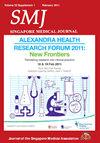重症登革热病例的临床概况和生存预测因素
IF 1.7
4区 医学
Q2 MEDICINE, GENERAL & INTERNAL
引用次数: 0
摘要
摘要简介:登革热是热带国家的一种地方病。严重登革热有很高的发病率和死亡率。我们的目的是确定重症监护病房(ICU)患者中与登革热生存相关的因素。方法:对马来西亚吉打州苏丹阿卜杜勒哈利姆医院2016 - 2019年ICU收治的登革热病例进行回顾性研究。结果:1852例登革热住院病例中,7.2%的患者需要进入ICU。重症登革热病例生存率为88.6%。重症登革热患者以肥胖为主,其他显著合并症包括高血压和糖尿病。此外,73%的患者在发病第4天的中位数出现在关键期。所有入住ICU的患者均有发热史。主要的预警信号是嗜睡、体液积聚和血凝伴血小板迅速减少。在非幸存者中,69.2%患有暴发性肝炎,53.8%患有大出血或弥散性血管内凝血,38.5%患有噬血细胞淋巴组织细胞病,30.8%患有心肌炎。主要血清型为DENV-3和DENV-1。2017年的病例数最少,所有血清型的病例数相同。多因素logistic回归分析显示,SOFA评分、国际标准化比值峰值、部分凝血活酶时间峰值和入院时天门冬氨酸转氨酶峰值是影响患者生存的独立危险因素。该模型的曲线下面积为0.98,总体精度为98.2%。结论:登革热患者特殊的警告信号和血液检查可能有助于早期决定是否进入ICU。监测SOFA评分、凝血和肝酶谱可提高登革热存活率。本文章由计算机程序翻译,如有差异,请以英文原文为准。
Clinical profiles and predictors of survival in severe dengue cases
Abstract Introduction: Dengue is endemic in tropical countries. Severe dengue has a high risk of morbidity and mortality. We aimed to identify factors associated with dengue survival among our intensive care unit (ICU) patients. Methods: A retrospective study was conducted among dengue cases admitted to the ICU of Hospital Sultan Abdul Halim, Kedah, Malaysia from 2016 to 2019. Results: Out of 1,852 dengue cases admitted to the hospital, 7.2% of patients required ICU admission. Survival rate was 88.6% among severe dengue cases. The majority of severe dengue patients were obese, while other notable comorbidities included hypertension and diabetes mellitus. Also, 73% of patients presented in the critical phase, at a median of Day 4 of illness. All patients admitted to the ICU had a history of fever. The predominant warning signs were lethargy, fluid accumulation and haemoconcentration with rapid platelet reduction. Among nonsurvivors, 69.2% had fulminant hepatitis, 53.8% had massive bleeding or disseminated intravascular coagulation, 38.5% had haemophagocytic lymphohistiocytosis and 30.8% had myocarditis. The predominant serotypes were DENV-3 and DENV-1. The least number of cases was seen in 2017, when all serotypes were equally presented. Multiple logistic regression showed that Sequential Organ Failure Assessment (SOFA) score, peak international normalised ratio, peak partial thromboplastin time and aspartate aminotransferase on admission were independent risk factors for survival. This model had an area under the curve of 0.98, giving an overall 98.2% accuracy. Conclusions: Specific warning signs and blood investigations in dengue patients may aid in early decision for ICU admission. Monitoring of SOFA scores plus coagulation and liver enzyme profiles could improve dengue survival rates.
求助全文
通过发布文献求助,成功后即可免费获取论文全文。
去求助
来源期刊

Singapore medical journal
MEDICINE, GENERAL & INTERNAL-
CiteScore
3.40
自引率
3.70%
发文量
149
审稿时长
3-6 weeks
期刊介绍:
The Singapore Medical Journal (SMJ) is the monthly publication of Singapore Medical Association (SMA). The Journal aims to advance medical practice and clinical research by publishing high-quality articles that add to the clinical knowledge of physicians in Singapore and worldwide.
SMJ is a general medical journal that focuses on all aspects of human health. The Journal publishes commissioned reviews, commentaries and editorials, original research, a small number of outstanding case reports, continuing medical education articles (ECG Series, Clinics in Diagnostic Imaging, Pictorial Essays, Practice Integration & Life-long Learning [PILL] Series), and short communications in the form of letters to the editor.
 求助内容:
求助内容: 应助结果提醒方式:
应助结果提醒方式:


